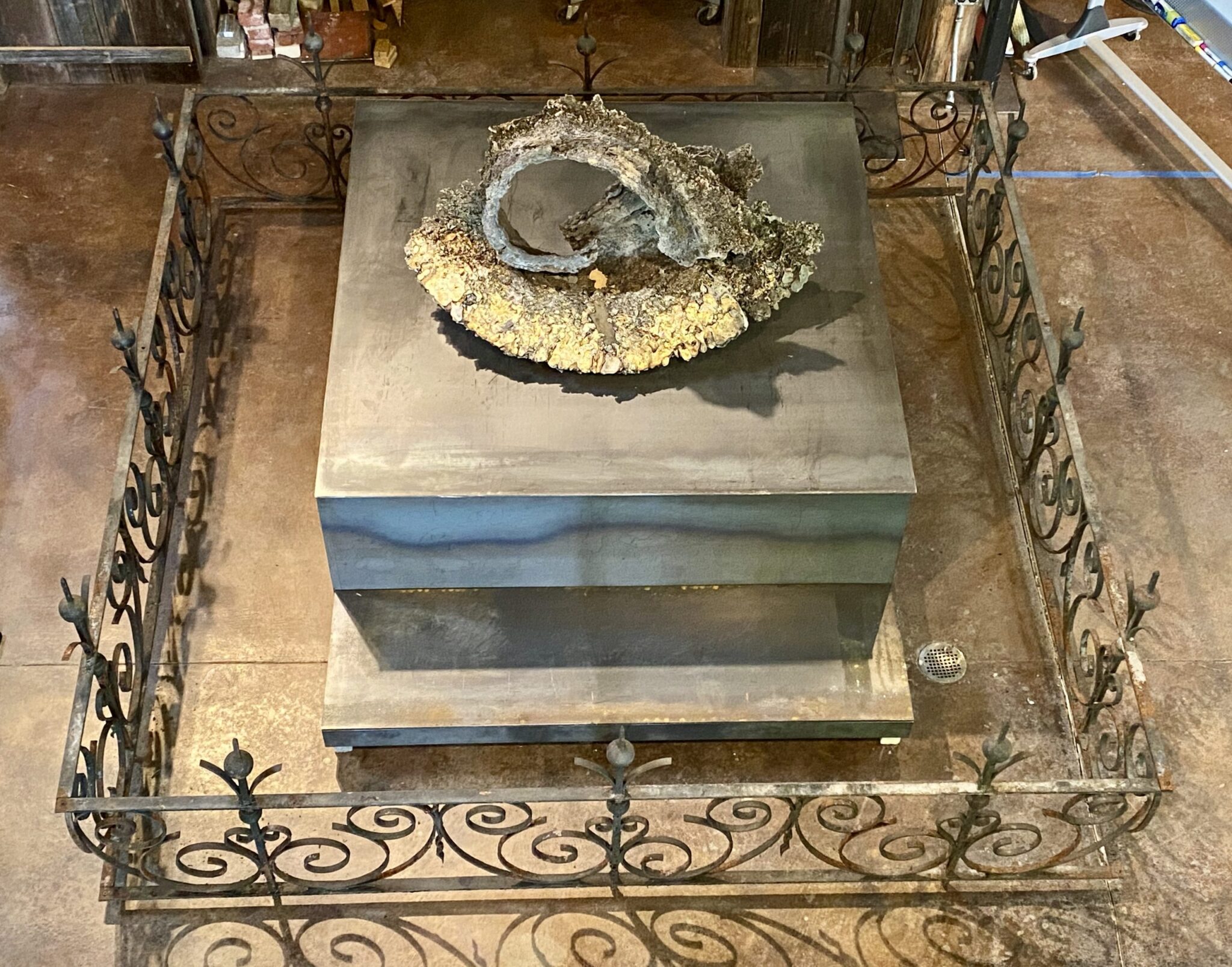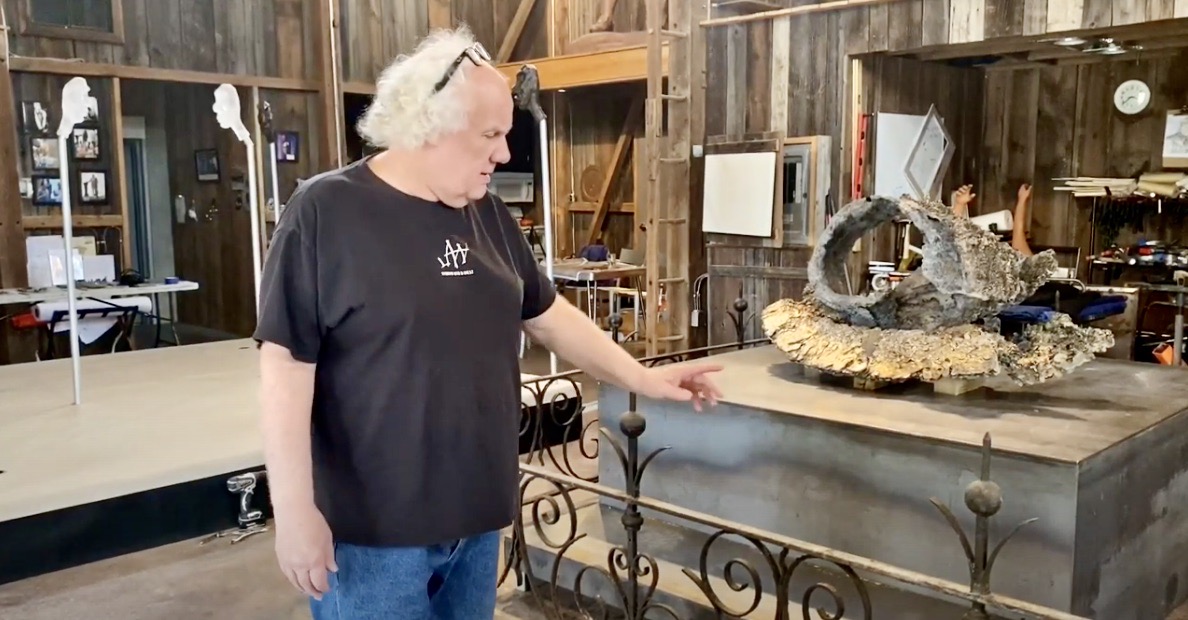
The Altar: Industrialism is a work in progress by the sculptor Jim West, whose work has been shown in museums, public spaces, and is held in private collections. This piece “is the story of where we came from and how that made us, what’s going to happen in the future, and how we react to it," West says. (Photograph courtesy of Jim West)
Inside an artist's studio, amid a pandemic
From history and scrap, comes art
~
By Kimberly Palmiero
No one wanted to sell the sculptor Jim West a bridge.
He insisted on buying one anyway.
Trusses from a beat-up, blown-up bridge just outside of Pittsburgh caught his eye. The hulking metal pieces were crafted at Carnegie Steel, a storied company that gave rise to an industry and a way of life.
From his studio along the Allegheny River, West has been working on pieces, some from found objects, he began pre-pandemic that don’t yet have a home. And he’s using what he has to tell stories through figural sculpture, as in this video.
“We’re all in this together. We’re going to make it through,” he said. “The message then as it must be now is to take responsibility for our own actions in the context of the greater good. To think globally but act locally to protect the past but serve as a steward for future generations. That is the true power and purpose of art — to transform and to inspire.”
It’s from some expeditions that West’s pieces are formed.
West for years built homes but then transitioned to becoming an artist full-time.
He works in bronze, and other metals, creating art that tells stories, many rooted in the history of a post-industrial region.
Some are commissions, some are not. His work has been shown at the Hoyt Art Center in New Castle, Pa., ArtsQuest Center at Steelstacks in Bethlehem, Pa., Grand Masonic Museum in Philadelphia, and is part of private collections in the U.S. and Europe.
Back to those trusses: As West puts it, he had to have them. He called the demolition company.
“You have a bridge. You’re taking it down. I need it,” he told them.
He followed workers from the site to the scrapyard to strike a deal.
“You have to be persistent,” said West, a shock of white hair standing off his head, in his studio crafted from a barn acquired for free.
He acquired the “scrap” from the former Jonathan Hulton Bridge, in 2016, for 17 cents a pound. At that price, he said, “I went crazy.” He left with more than he’d planned. He still has more left.
But in the forced solitude of social distancing, his search for materials is cut short and West is working on new pieces.
In one area of his studio, The Book of Knowledge features a young man and an older man, standing together. They are the same person in different stages of life. It’s part of a larger piece.
“But it’s not just about men, it’s about men and women and all of us. So it’s about, I wish I would have told my dad this, I told my mom that. So we asked people to leave notes on the wall or I wish I would have done this with my children. So it’s about leaving those things behind but respecting them at the same time.”
The Altar: Industrialism “is the story of where we came from and how that made us, what’s going to happen in the future, and how we react to it.”

Jim West is working on The Altar: Industrialism in his studio just outside of Pittsburgh.
Part of what formed the sculpture he found in a salvage yard.
“Everybody’s like, you really want that piece. Yes, this is it. This is the story, and the story is about us and about that process and how it changes,” he said.
Pre-pandemic, West volunteered at George Junior Republic, for troubled and dependent youth, for months to help them tell their stories through art. That project is on pause amid social distancing. He created a program to help inspire through art and encourage them to work through their struggles.
“So much came out through the art that was not coming out in counseling over at the institutional side. So it really became a bridge,” West said. “It’s changed my life. We really need to look at these young people in a different way.”
As part of the program, West created Yellow Dog. That sculpture stands at the pump house of the former Homestead Works, the site of a bloody labor dispute a century ago in western Pennsylvania.

The sculpture Yellow Dog in Homestead, Pa. by artist Jim West. (Photograph courtesy of Jim West)
He named the piece for the contract between worker and employer in which the worker agrees to remain separate from the union. West said he saw parallels between the workers’ and the boys’ struggles.
Stick figures lift a truss — produced about 100 years ago at the facility in Homestead.
West incorporated trusses from the bridge he bought into the piece.
For a longer version of the story, subscribe to our magazine by clicking here.

